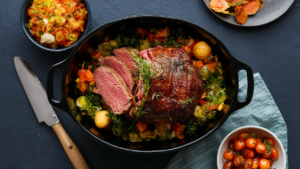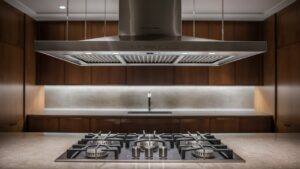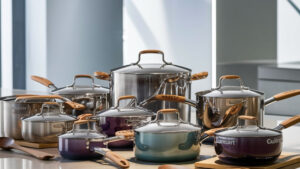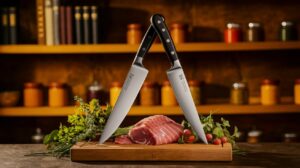Are you puzzled by the difference between your air fryer and the convection oven setting on your kitchen appliance? You’re not alone.
Recommended Best Air Fryer 2025-2026
| Recommendation | Product |
| Best Overall | Ninja Crispi 4-in-1 Portable Glass Air Fryer Cooking System |
| Popular Choice | Chefman Air Fryer Oven |
| Best Value | Emeril Lagasse Air Fryer Toaster Oven |
| Best Budget | COSORI Air Fryer 9-in-1 |
| Another Excellent Pick | Ninja DZ201 Foodi Air Fryer |
Many people wonder if they can use these tools interchangeably or if each serves a unique purpose. Understanding the nuances between an air fryer and a convection oven setting can transform your cooking game, making meal prep quicker, healthier, and more efficient.
Imagine perfect, crispy dishes without the hassle of deep-frying or uneven cooking. Dive into this article to discover how mastering these appliances can elevate your culinary experience. Get ready to unlock the secrets behind achieving restaurant-quality meals right in your own home!
Cooking Technology
Cooking technology has come a long way in recent years. Two popular kitchen appliances, the air fryer and the convection oven, use unique methods to cook food. Understanding their technology can help you make informed choices in your kitchen.
How Air Fryers Work
Air fryers use rapid air technology to cook food. They circulate hot air around the food, creating a crispy layer. This method mimics deep frying but uses little or no oil. The air fryer has a fan and a heating element located at the top. This design ensures even heat distribution. The basket holds food, allowing air to flow freely. This technology helps achieve a fried texture without excessive fat.
Convection Oven Mechanisms
Convection ovens also use fans to circulate air. The difference lies in their design. These ovens have a fan at the back. This fan evenly distributes heat throughout the oven. The heating elements are generally at the top and bottom. This setup ensures food cooks evenly on all sides. Convection ovens are larger, accommodating bigger meals. They are ideal for baking, roasting, and broiling, offering versatility in cooking.
Health And Nutrition
Air fryers circulate hot air rapidly to cook food with a crispy texture. Convection ovens use a fan to evenly distribute heat, cooking food more uniformly. Both options offer healthier alternatives to traditional frying methods.
When it comes to choosing between an air fryer and a convection oven, many of us are primarily concerned about health and nutrition. Both appliances promise delicious, crispy results with less oil, but is one really healthier than the other? Let’s dive into the details and see how they stack up in terms of oil usage and nutritional impact.
Oil Usage Comparison
Air fryers are designed to cook food with minimal oil. Imagine making your favorite fried chicken with just a tablespoon of oil instead of deep frying it in cups of oil. This can significantly reduce the calorie content of your meals. On the other hand, convection ovens typically require a bit more oil to achieve similar results, although still far less than traditional frying methods.
Have you ever tried baking fries in a convection oven? You might find they need a light coating of oil to get that crispy texture. With an air fryer, you can achieve similar crispiness with a quick spray of oil. This makes air fryers a great option if you’re watching your fat intake.
Nutritional Impact
Reducing oil doesn’t just cut calories; it also means less saturated fat. This can contribute to better heart health over time. But what about the actual nutrients in your food? Air fryers and convection ovens both cook food quickly, which can help preserve vitamins and minerals that are lost in prolonged cooking.
For example, roasting vegetables in a convection oven can enhance their natural flavors without the need for extra oil. Meanwhile, air fryers can make veggies like Brussels sprouts or sweet potatoes satisfyingly crispy without losing their nutrient content.
Are you worried about acrylamide, a potentially harmful compound formed when starchy foods are cooked at high temperatures? Air fryers can reduce the formation of acrylamide compared to deep frying, which might be an added health benefit.
In the end, both the air fryer and convection oven offer healthier cooking alternatives. The choice between the two might come down to your cooking style and dietary needs. Do you prefer the taste of lightly fried foods with minimal oil, or do you enjoy the thorough, even cooking of a convection oven? Consider what fits best with your kitchen routine and health goals.
Cooking Efficiency
Air fryers cook faster with hot air circulation, using less oil. Convection ovens spread heat evenly, ideal for baking.
Cooking efficiency is crucial when choosing between an air fryer and a convection oven. Both appliances promise quicker cooking times and energy savings, but they achieve these in different ways. Understanding the nuances can help you make an informed decision for your kitchen.
Time And Energy Consumption
Air fryers are known for their rapid cooking capabilities. They preheat faster, significantly reducing the overall cooking time. If you’re in a hurry to get dinner on the table, the air fryer might be your best friend.
Convection ovens, on the other hand, can handle larger quantities of food, which might mean longer cooking times. However, they often use less energy per batch due to their ability to cook multiple items at once. Have you ever wondered how much energy you might save over a year with a convection oven?
Temperature Control
Air fryers often operate at higher temperatures, ensuring a crispy finish on your food. This makes them excellent for items like fries and chicken wings. However, the high temperatures can sometimes be tricky to manage, especially for delicate foods.
Convection ovens offer more precise temperature control. This makes them ideal for baking and roasting, where exact temperatures matter. If you’ve ever baked a cake, you know how essential it is to keep the temperature just right.
When considering cooking efficiency, think about your daily cooking needs. Are you more about speed or precision? Each appliance brings its strengths to the table, and understanding these can help you cook more efficiently.
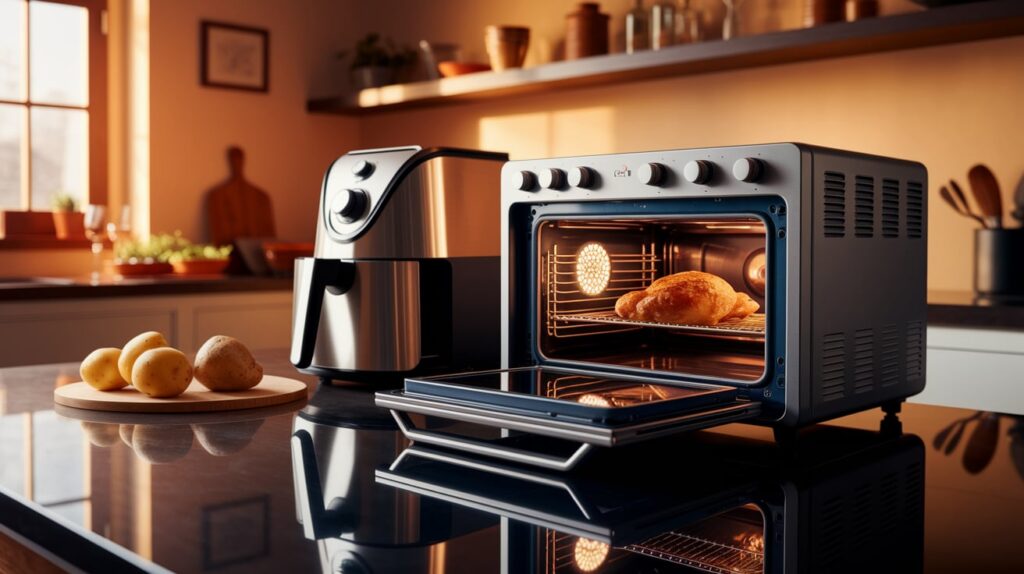
Versatility And Functionality
Air fryers and convection ovens are popular kitchen appliances. Both offer unique benefits in cooking. They differ in versatility and functionality. Understanding these differences helps in choosing the right appliance.
Range Of Cooking Options
Air fryers excel at cooking fried foods with less oil. They are perfect for crispy fries and chicken wings. Convection ovens have a broader range. They bake, roast, and broil with ease. This makes them ideal for cooking various dishes. Each appliance offers distinct cooking capabilities.
Ease Of Use
Air fryers are straightforward. They have simple controls and settings. Convection ovens might require more attention. They have more settings to manage. Air fryers are compact, fitting well in small kitchens. Convection ovens take up more space. They might need a learning curve for best results.
Size And Capacity
Air fryers are compact and suitable for small meals, while convection ovens handle larger quantities. Air fryers typically have a smaller cooking capacity, making them ideal for quick snacks. Convection ovens offer more space and versatility for roasting and baking.
When choosing between an air fryer and a convection oven, understanding size and capacity can significantly impact your cooking experience. These factors influence not only what you can cook but also how your kitchen functions daily. Let’s dive into the details and see how each option stacks up.
Space Considerations
Whether you’re working with a cozy apartment kitchen or a spacious home setup, space is a premium. Air fryers are generally compact and easy to fit on countertops. Their small size makes them perfect for quick meals without overwhelming your kitchen space.
Convection ovens, on the other hand, require more room. They often come as built-in units or larger standalone appliances. Before investing, ask yourself: Do you have the space for a convection oven? If you’re short on counter space, an air fryer might be the better choice.
Cooking Capacity
Cooking capacity is crucial if you frequently cook for a crowd or meal prep for the week. Air fryers are great for single servings or small batches. They excel at making crispy fries for two or a quick chicken breast for dinner.
Convection ovens offer more cooking capacity, allowing you to prepare larger meals. They can handle a whole chicken or multiple pizzas at once. If you often cook for family gatherings, consider the larger capacity of a convection oven.
Ultimately, your choice depends on your cooking habits and kitchen setup. Do you prioritize compactness or need to cook larger meals regularly? Reflect on these questions to guide your decision.
Maintenance And Durability
Air fryers need less maintenance due to fewer parts, while convection ovens have more components that require regular care. Air fryer coatings resist wear, ensuring long-term durability. Convection ovens may require part replacements, affecting longevity.
When deciding between an air fryer and a convection oven, maintenance and durability are essential factors. You want an appliance that is easy to clean and built to last. Understanding these differences can help you choose the right kitchen tool that fits your lifestyle and cooking habits.
Cleaning Requirements
Cleaning can be a chore, but it doesn’t have to be. Air fryers typically come with removable baskets or trays that you can wash separately. This design makes cleaning straightforward.
Convection ovens, on the other hand, often have fixed racks and require a bit more effort. You may need to bend and reach into the oven to clean it properly. If you’re someone who loves quick and easy cleanup, you might lean towards an air fryer. Do you have a preference for easy cleaning?
Lifespan And Reliability
The lifespan of your appliance is another crucial consideration. Air fryers are generally compact and have fewer parts, which might suggest a longer durability. However, their electronics can be prone to wear over time, especially if used heavily.
Convection ovens are usually sturdier, with robust components. They might not need frequent replacements. But they can be more susceptible to issues like overheating or door seal problems.
Choosing an appliance that matches your usage frequency can impact its reliability. Are you someone who cooks daily or occasionally?
Both appliances have their strengths and weaknesses. Your personal cooking habits and maintenance preferences can guide you to the best choice.
Cost And Investment
Air fryers often cost less upfront compared to convection ovens. Convection ovens might require a larger initial investment. Both offer energy efficiency, but air fryers generally use less electricity, saving money in the long run.
When considering kitchen appliances, the cost and investment can play a significant role in your decision-making process. You want to ensure you’re getting value for your money without compromising on features or quality. Understanding the cost implications of air fryers versus convection ovens can help you make an informed choice. Let’s dive into the initial purchase price and long-term costs associated with these appliances.
Initial Purchase Price
Air fryers often come with a lower price tag compared to convection ovens. This makes them an attractive option if you’re looking to enhance your kitchen on a budget. You can find decent air fryers for under $100, which offer basic functions suitable for small households or those new to this cooking style.
Convection ovens, on the other hand, tend to be more expensive. They range from a few hundred to over a thousand dollars, depending on size and features. While the investment is greater, you get a versatile appliance that can handle larger cooking tasks, making it ideal for families or avid home cooks.
Long-term Costs
When it comes to long-term costs, air fryers generally consume less energy. This can result in lower electricity bills over time, especially if you use your air fryer frequently. Maintenance costs are also minimal, with most air fryers requiring basic cleaning and occasional replacement of parts like trays or baskets.
Convection ovens might have higher energy consumption due to their size and power. However, they offer the advantage of durability and multifunctionality. If you bake, roast, and cook regularly, the convection oven may save you from needing multiple appliances, indirectly cutting down on future expenses.
Are you someone who enjoys quick meals without much prep? Or do you prefer cooking in bulk for family gatherings? Your lifestyle will influence which appliance is the better investment for you. Would you prioritize upfront savings or long-term functionality and efficiency? The choice is yours to make!
User Preferences
Air fryers cook food using rapid hot air, making it crispy without much oil. Convection ovens use a fan to circulate heat, cooking food evenly. Both methods offer unique benefits for healthier meals.
When choosing between an air fryer and a convection oven, user preferences play a significant role. Each appliance offers unique benefits, and what works best for you depends on your lifestyle and cooking habits. Let’s explore how these preferences shape the decision-making process.
Lifestyle Compatibility
Your lifestyle can heavily influence which appliance suits you best. If you’re always on the go and need quick, hassle-free meals, an air fryer might be your go-to. It heats up fast, cooks food efficiently, and requires minimal cleanup.
On the other hand, if you love experimenting with recipes or cook for a large family, a convection oven could be more compatible. It offers more space and versatility, allowing you to bake, roast, or even dehydrate. Think about how often you cook and what types of meals you prefer.
Do you usually prepare single servings, or do you entertain guests often? This can help you determine which appliance aligns better with your routine.
User Experience Feedback
Hearing from other users can provide valuable insights into which appliance might suit you. Many air fryer users appreciate its ability to deliver crispy textures without excessive oil. They often mention how easy it is to use and how it encourages healthier eating habits.
Conversely, convection oven users might highlight its multifunctionality. They enjoy the ability to cook multiple dishes at once, which is ideal for family dinners or meal prepping.
Take a moment to consider feedback from others who share similar cooking needs. You might discover unexpected advantages or drawbacks that you hadn’t considered.
Have you read any reviews or talked to friends about their experiences? These insights can guide your decision and enhance your cooking experience.
Key Difference between Air Fryer And Convection Oven
Below is a summarizing the key differences between an air fryer and a convection oven, based on design, functionality, and use case.
| Feature | Air Fryer | Convection Oven |
|---|---|---|
| Design & Size | Compact countertop appliance (2-6 qt, up to 12 qt). Basket/tray-based. | Larger, countertop or full-size oven (10-30+ qt). Multiple racks/trays. |
| Cooking Method | Rapid air circulation in small chamber mimics deep-frying with little oil. | Fan circulates hot air in larger space for even baking/roasting. |
| Versatility | Best for frying, roasting, reheating. Limited baking/dehydrating in some models. | Supports baking, roasting, broiling, toasting, pizza-making. |
| Cooking Speed | 20-30% faster than traditional ovens for small batches (e.g., fries in 10-15 min). | 10-15% faster than standard ovens, slower for small portions. |
| Capacity | Small (2-6 lbs food). Single-layer cooking to avoid overcrowding. | Large, fits family-sized meals (e.g., 12-lb turkey) or multiple trays. |
| Energy Efficiency | More efficient for small meals (~1,200-1,700 watts). | Higher energy use (~1,200-3,000 watts), efficient for large batches. |
| Price (Amazon) | $50-$200 (e.g., Ninja, Cosori, Philips). | $100-$400 (countertop, e.g., Breville, Cuisinart); $1,000+ (full-size). |
| Ease of Use/Cleaning | Simple controls, dishwasher-safe baskets, easy to clean. | Complex settings, harder to clean due to larger interior/racks. |
| Best For | Quick, crispy small meals (e.g., fries, wings), small kitchens. | Versatile cooking, large meals, baking (e.g., cakes, roasts). |
Frequently Asked Questions
Is Convection Setting On Oven The Same As Air Fryer?
The convection setting on an oven and an air fryer both circulate hot air for cooking. An air fryer is typically more compact and cooks faster due to higher air circulation speed. While similar, they are not exactly the same, with air fryers often providing a crisper finish.
Why Are People Getting Rid Of Air Fryers?
Many people are ditching air fryers due to space constraints and inconsistent cooking results. Some find them difficult to clean, while others prefer traditional cooking methods for better flavor. Concerns about durability and noise also contribute to their declining popularity.
Air fryers might not meet everyone’s expectations for convenience and efficiency.
What Should Not Be Cooked In A Convection Oven?
Avoid cooking delicate dishes like soufflés or custards in a convection oven. They can dry out quickly. Foods that need moisture, like cakes, may not rise properly due to the constant air circulation. Use a conventional oven for recipes needing gentle heat and consistent moisture.
How To Convert Conventional Oven Times To Air Fryer?
To convert oven times to air fryer, reduce temperature by 25°F and cooking time by 20%. Check food frequently for doneness. Adjust based on results, as air fryers vary in performance. Experiment with small batches to perfect timing and temperature.
Always preheat the air fryer for even cooking.
Conclusion
Choosing between an air fryer and convection oven depends on your needs. Air fryers are compact and cook food quickly. Ideal for crispy snacks. Convection ovens handle larger meals and bake evenly. Perfect for family dinners. Consider space and cooking style.
Each appliance offers unique benefits. Think about your favorite recipes. Do you need speed or capacity? Both have pros and cons. Make the choice that fits your kitchen. Enjoy delicious meals every time. Each device can enhance your cooking experience.
Explore and decide what suits you best. Happy cooking!

